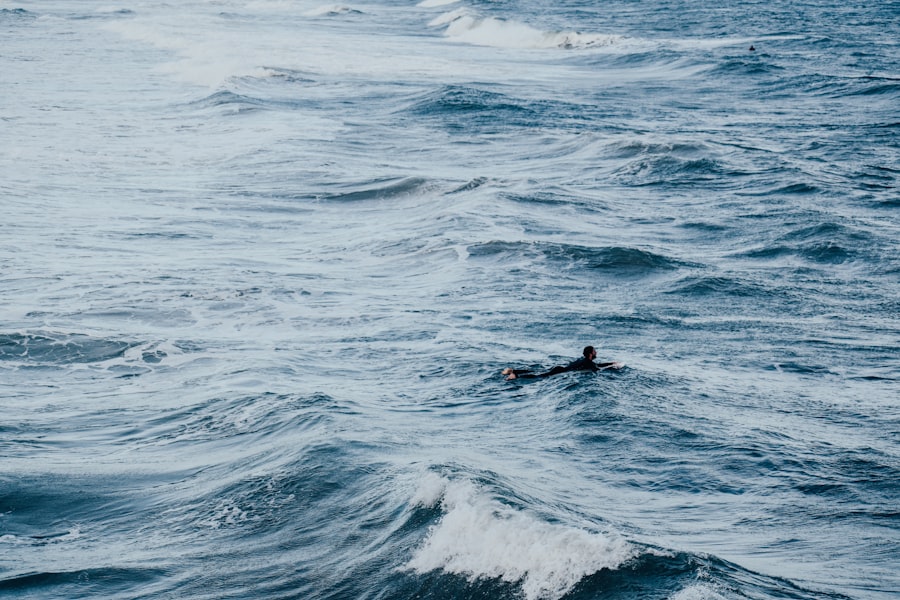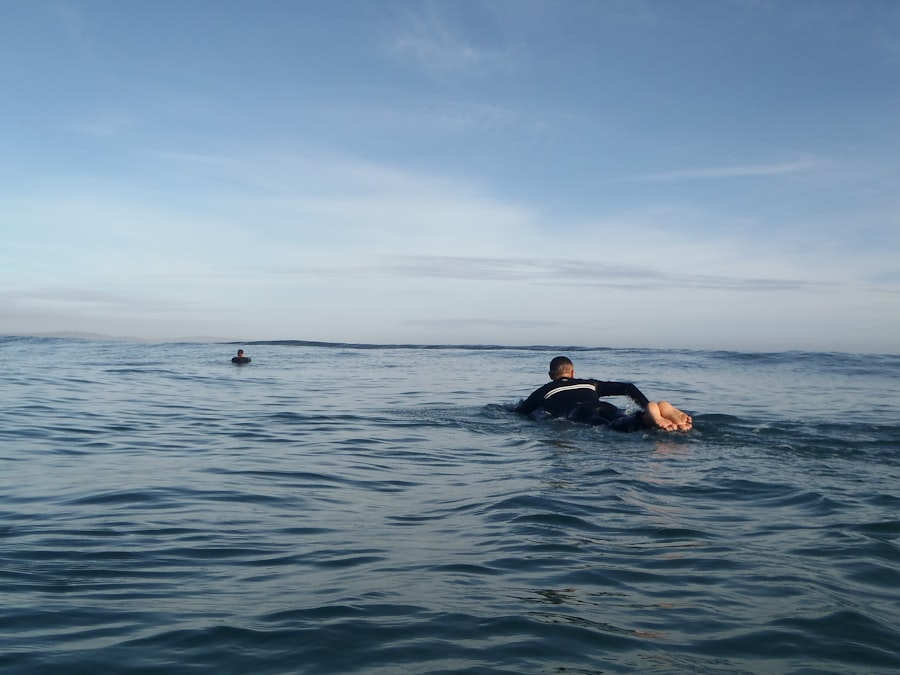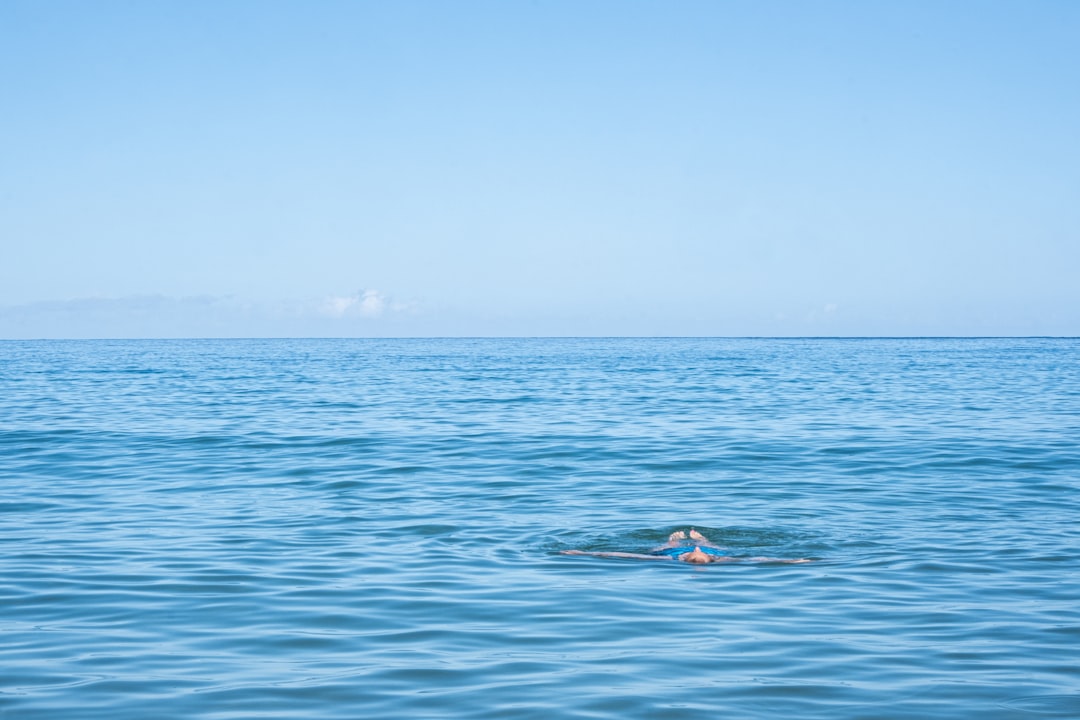The Drake Passage, a body of water that separates South America from Antarctica, is renowned for its tumultuous seas and unpredictable weather.
Stretching approximately 600 kilometers (370 miles) between Cape Horn and the Antarctic Peninsula, it serves as a critical conduit for ocean currents and marine life.
The passage is not only a geographical marvel but also a testament to the raw power of nature, drawing attention from those who seek to explore its depths. For many, the allure of the Drake Passage lies in its reputation as one of the most challenging maritime routes in the world. The waters are known for their fierce storms and high waves, making navigation a daunting task.
However, this very unpredictability has sparked interest among thrill-seekers and swimmers who dream of conquering its icy waters. The Drake Passage is not merely a geographical feature; it embodies the spirit of adventure and the quest for exploration that has defined human history.
Key Takeaways
- Drake Passage is a body of water between South America’s Cape Horn and the South Shetland Islands of Antarctica, known for its strong winds and rough seas.
- The characteristics of Drake Passage include unpredictable weather, strong currents, and high waves, making it a challenging and dangerous place to swim.
- Swimming in Drake Passage poses numerous challenges, including extreme cold temperatures, strong currents, and the risk of hypothermia and exhaustion.
- The dangers of swimming in Drake Passage include the threat of hypothermia, strong currents pulling swimmers away from safety, and the presence of icebergs and sea ice.
- The wildlife of Drake Passage includes a diverse range of marine animals such as whales, seals, and various species of seabirds, making it a popular destination for wildlife enthusiasts.
- The best time to visit Drake Passage is during the austral summer, from November to March, when the weather is relatively milder and wildlife is abundant.
- Alternatives to swimming in Drake Passage include wildlife watching, bird watching, and exploring the unique landscapes and ecosystems of the region.
- Safety precautions for exploring Drake Passage include wearing appropriate cold-water gear, staying close to the expedition vessel, and following the guidance of experienced guides and crew members.
- Activities to enjoy in Drake Passage include kayaking, photography, and attending educational lectures and presentations about the region’s history and wildlife.
- The importance of preserving Drake Passage lies in its ecological significance as a critical migratory route for marine animals and its role in regulating global ocean currents and climate.
- Conclusion: Should you swim in Drake Passage? Given the extreme conditions, strong currents, and potential dangers, it is not advisable to swim in Drake Passage. Instead, visitors can explore and appreciate the region’s unique wildlife and natural beauty through safer and more sustainable activities.
The characteristics of Drake Passage
The Drake Passage is characterized by its unique geographical features and climatic conditions. It is often described as the meeting point of the Atlantic and Pacific Oceans, where the cold waters of the Southern Ocean collide with warmer currents. This convergence creates a dynamic environment that is both fascinating and treacherous.
The passage is known for its strong currents, particularly the Antarctic Circumpolar Current, which flows unimpeded around Antarctica, contributing to the region’s extreme weather patterns. The water temperature in the Drake Passage varies significantly, influenced by seasonal changes and oceanic currents. During summer months, temperatures can reach around 5 degrees Celsius (41 degrees Fahrenheit), while winter months can see them plummet to near freezing.
The visibility in these waters can also be quite limited due to fog and heavy seas, adding another layer of complexity for those daring enough to venture into its depths. The combination of these factors creates an environment that is as beautiful as it is perilous.
The challenges of swimming in Drake Passage

Swimming in the Drake Passage presents a myriad of challenges that can deter even the most seasoned swimmers. The first and foremost challenge is the frigid water temperature, which can lead to hypothermia within minutes without proper thermal protection. Even with wetsuits or drysuits, the extreme cold can be overwhelming, making it essential for swimmers to acclimatize before attempting such a feat.
The sheer size of the passage also means that swimmers must contend with vast distances, often requiring significant endurance and stamina. In addition to the cold, swimmers face unpredictable weather conditions that can change rapidly. Sudden storms can whip up waves that reach heights of several meters, creating dangerous situations for anyone in the water.
The strong currents can also pose a significant risk, pulling swimmers away from their intended path or even dragging them under. These challenges necessitate careful planning and preparation, as well as a deep understanding of the local conditions.
The dangers of swimming in Drake Passage
| Category | Statistics |
|---|---|
| Water Temperature | 1-4°C (34-39°F) |
| Current Speed | 1-2 knots |
| Wave Height | 4-6 meters (13-20 feet) |
| Icebergs | Common in the area |
| Wildlife | Potential encounters with seals, whales, and penguins |
| Rescue Response Time | Several hours due to remote location |
The dangers associated with swimming in the Drake Passage extend beyond just cold water and rough seas. One of the most significant risks is the presence of marine wildlife, including seals and sharks, which inhabit these waters. While encounters with these creatures are rare, they can be unpredictable and potentially dangerous.
Swimmers must remain vigilant and aware of their surroundings at all times to avoid any unwanted interactions.
In case of an emergency, help may be far away, making it crucial for swimmers to have a solid support team on land or in nearby vessels.
The remoteness of the area means that access to medical assistance is limited, which can exacerbate any injuries or health issues that arise during a swim. Therefore, understanding these dangers is vital for anyone considering taking the plunge into these treacherous waters.
The wildlife of Drake Passage
Despite its challenges and dangers, the Drake Passage is home to an incredible array of wildlife that thrives in its cold waters. The region serves as a vital habitat for various species of seals, including Weddell seals and leopard seals, which can often be spotted lounging on ice floes or swimming gracefully through the water. Additionally, numerous species of whales migrate through these waters, including humpback whales and orcas, making it a prime location for whale watching.
Birdlife is also abundant in the Drake Passage, with seabirds such as albatrosses and petrels soaring above the waves. These birds are well adapted to life in this harsh environment and play an essential role in the local ecosystem. The presence of such diverse wildlife not only adds to the beauty of the passage but also highlights its ecological significance.
For those who venture into these waters, encounters with these magnificent creatures can be both awe-inspiring and humbling.
The best time to visit Drake Passage

Timing is crucial when planning a visit to the Drake Passage, especially for those considering swimming or other outdoor activities. The best time to explore this region is during the austral summer months, from late November to early March. During this period, temperatures are relatively milder, and sea conditions tend to be more favorable for navigation and exploration.
This window allows adventurers to experience the beauty of the passage while minimizing some of the inherent risks associated with colder months. However, even during summer, conditions can still be unpredictable. Swimmers should be prepared for sudden changes in weather and sea state, as storms can arise without warning.
It is advisable to monitor weather forecasts closely and remain flexible with plans to ensure safety while maximizing enjoyment during their visit.
Alternatives to swimming in Drake Passage
For those who are drawn to the allure of the Drake Passage but may not feel comfortable swimming in its frigid waters, there are numerous alternative activities that allow for exploration without taking on such risks. One popular option is kayaking, which provides an intimate way to experience the passage’s stunning landscapes while remaining safely above water. Kayaking allows adventurers to navigate through icebergs and observe wildlife up close while enjoying a unique perspective on this remarkable environment.
Another alternative is embarking on guided boat tours that offer opportunities for wildlife watching and photography. These tours often include knowledgeable guides who provide insights into the region’s ecology and history while ensuring safety on the water. For those interested in hiking or trekking, there are also opportunities to explore nearby islands and coastal areas where one can appreciate the breathtaking scenery without venturing into the icy depths of the passage.
Safety precautions for exploring Drake Passage
Safety should always be a top priority when exploring the Drake Passage or engaging in any activities within its waters. For swimmers considering taking on this challenge, it is essential to have proper training and experience in cold-water swimming techniques. Wearing appropriate thermal gear is crucial to prevent hypothermia and ensure comfort during any swim attempt.
Additionally, having a support team is vital for safety during any exploration in this remote area. This team should include experienced guides familiar with local conditions who can provide assistance if needed. Communication devices should also be on hand to ensure that help can be summoned quickly in case of emergencies.
By taking these precautions seriously, adventurers can mitigate risks while enjoying all that the Drake Passage has to offer.
Activities to enjoy in Drake Passage
Beyond swimming, there are countless activities to enjoy in and around the Drake Passage that cater to various interests and skill levels. For those passionate about photography or nature observation, birdwatching excursions provide an opportunity to capture stunning images of seabirds in their natural habitat while learning about their behaviors and migratory patterns. For adventure seekers looking for adrenaline-pumping experiences, ice climbing on nearby glaciers offers a thrilling way to engage with the dramatic landscape surrounding the passage.
This activity allows participants to challenge themselves physically while enjoying breathtaking views of ice formations and rugged terrain.
The importance of preserving Drake Passage
Preserving the delicate ecosystem of the Drake Passage is crucial not only for its wildlife but also for global environmental health. As climate change continues to impact ocean temperatures and currents, understanding how these changes affect marine life becomes increasingly important. Conservation efforts aimed at protecting this unique environment are essential for maintaining biodiversity and ensuring that future generations can experience its wonders.
Moreover, responsible tourism practices play a significant role in preserving the integrity of the passage. Visitors should be mindful of their impact on local ecosystems by following guidelines set forth by conservation organizations and tour operators. By promoting sustainable practices and raising awareness about environmental issues facing this region, individuals can contribute positively to preserving the beauty and significance of the Drake Passage.
Should you swim in Drake Passage?
In conclusion, swimming in the Drake Passage presents an exhilarating yet daunting challenge that requires careful consideration and preparation. While it offers an unparalleled opportunity for adventure amidst stunning natural beauty, swimmers must weigh the risks against their capabilities and experience levels. For many, alternative activities such as kayaking or wildlife watching may provide a more accessible way to engage with this remarkable environment without exposing themselves to extreme dangers.
Ultimately, whether one chooses to swim or explore through other means, respecting the power of nature and prioritizing safety should always remain at the forefront of any adventure in this iconic passageway. The Drake Passage stands as a testament to both human curiosity and nature’s grandeur—a place where dreams of exploration meet reality’s challenges.
Swimming in the Drake Passage is an extreme challenge due to its notoriously rough waters and frigid temperatures. This treacherous stretch of sea, located between the southern tip of South America and Antarctica, is known for its unpredictable weather and strong currents, making it a daunting task even for the most experienced swimmers. For those interested in learning more about the geographical and environmental aspects of such extreme locations, you might find this related article insightful. It delves into various geographical quests and challenges, providing a broader context for understanding the unique conditions of places like the Drake Passage.
WATCH NOW! Drake Passage: Earth’s Deadliest Waters Revealed
FAQs
What is the Drake Passage?
The Drake Passage is the body of water between the southern tip of South America and the northern tip of the Antarctic Peninsula. It is known for its rough seas and strong winds.
Can you swim in the Drake Passage?
Swimming in the Drake Passage is not recommended due to its extremely cold temperatures, rough seas, and strong currents. The water temperature in the Drake Passage can be near freezing, making it dangerous for swimming.
Are there any organized swimming activities in the Drake Passage?
There are no organized swimming activities in the Drake Passage due to the hazardous conditions. The area is primarily known for its challenging sailing and wildlife viewing opportunities.
What are the dangers of swimming in the Drake Passage?
The dangers of swimming in the Drake Passage include hypothermia from the frigid water temperatures, strong currents that can pull swimmers away from safety, and the potential for encountering icebergs or other hazards in the water.
What activities are recommended in the Drake Passage?
Visitors to the Drake Passage are encouraged to participate in wildlife watching, bird watching, and photography from the safety of a boat or ship. The area is also popular for expedition cruises and scientific research expeditions.
